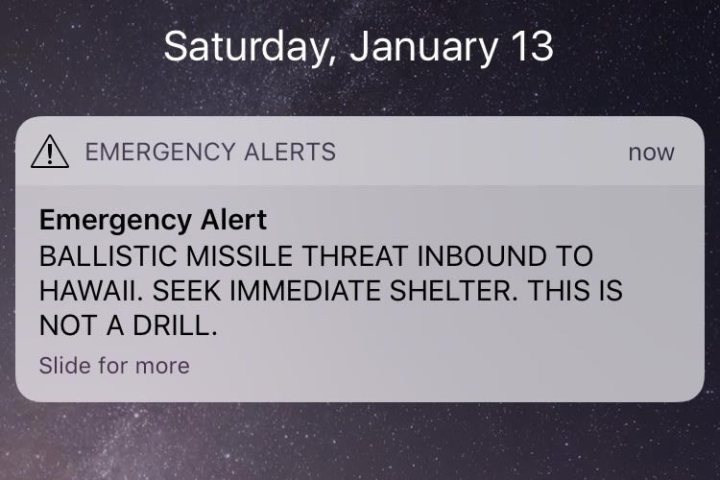
As posted on social media, this alert message sent families scrambling to find shelter and overloaded cell phone networks as people attempted to find out more information about the attack. The Hawaii Emergency Management’s website crashed shortly after the message was sent, so political leaders in Hawaii attempted to use Twitter and other social platforms to inform the public that the alert was false.
This was my phone when I woke up just now. I’m in Honolulu, #Hawaii and my family is on the North Shore. They were hiding in the garage. My mom and sister were crying. It was a false alarm, but betting a lot of people are shaken. @KPRC2 pic.twitter.com/m6EKxH3QqQ
— Sara Donchey (@KPRC2Sara) January 13, 2018
“It’s totally unacceptable,” U.S. Senator Brian Schatz said. “There was anxiety across the state and it was terrifying. There was a lot of unnecessary pain and anxiety. It’s important to have accountability at the state level and the emergency management level in terms of what exactly what went wrong.” Schatz also indicated that the alert was due to human error.
US Pacific Command spokesperson Commander David Benham also released a statement which read “SPACOM has detected no ballistic missile threat to Hawaii. Earlier message was sent in error. State of Hawaii will send out a correction message as soon as possible.” Due to rising tensions between the United States and North Korea, this unfortunate error was likely taken very seriously by Hawaii residents.
AGAIN FALSE ALARM. What happened today is totally inexcusable. The whole state was terrified. There needs to be tough and quick accountability and a fixed process.
— Brian Schatz (@brianschatz) January 13, 2018
The Federal Communications Commission has released a statement from chairman Ajit Pai regarding the incident. The chairman stated that the FCC is investigating the matter and is concerned that the state of Hawaii did not have “reasonable safeguards” in place to prevent such false alarms from occurring.
Wireless Emergency Alerts (WEA) is a public safety system that lets the government geographically-target text messages to wireless devices. Only three types of alerts are allowed: alerts issued by the President, alerts involving imminent threats to safety or life, and amber alerts. These alerts often come with a specific phone vibration or loud noise to alert the user. Beyond the mobile alerts, the message played on televisions around the state, basically overriding the audio of the current channel.
Update: Updated to reflect the news that the FCC is investigating this incident.

